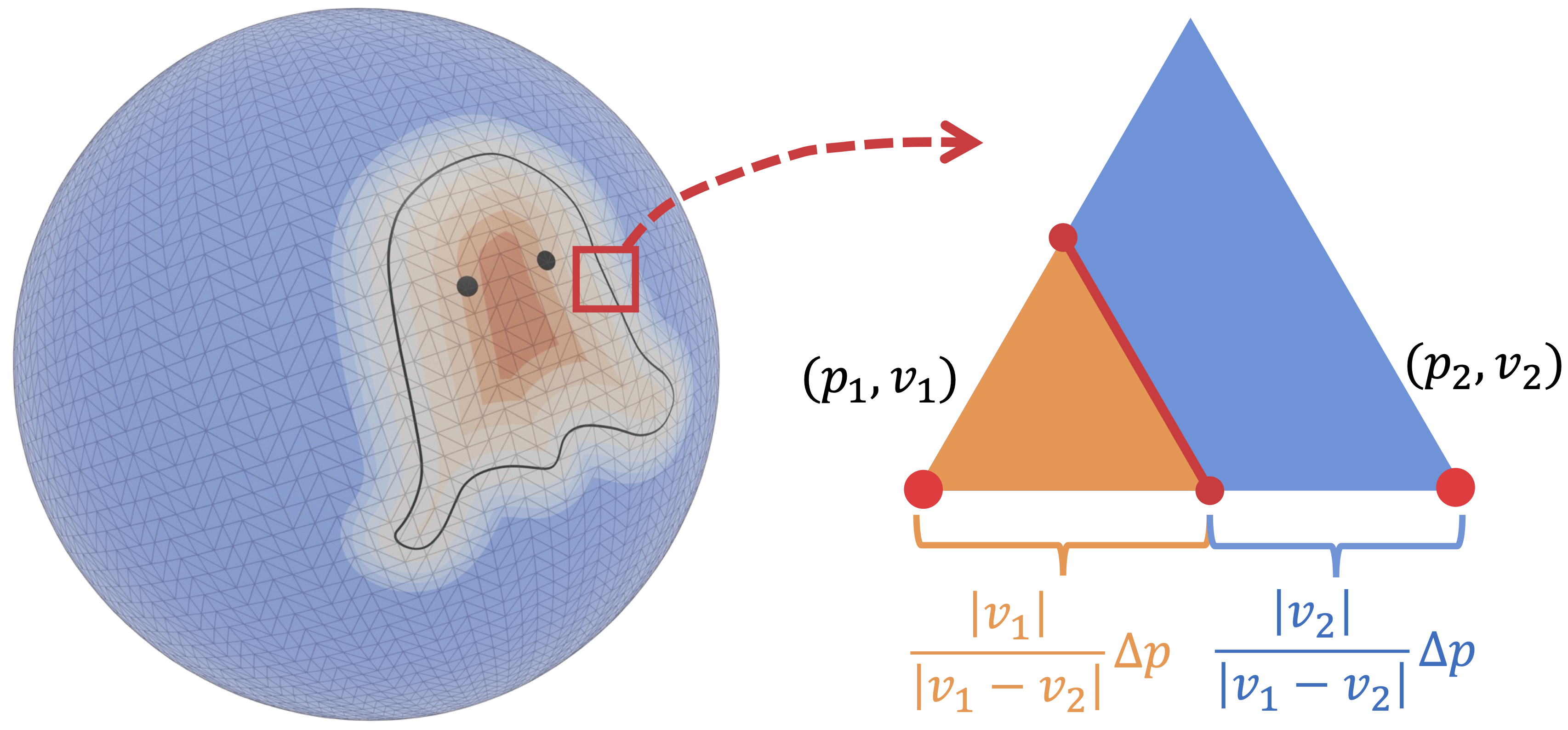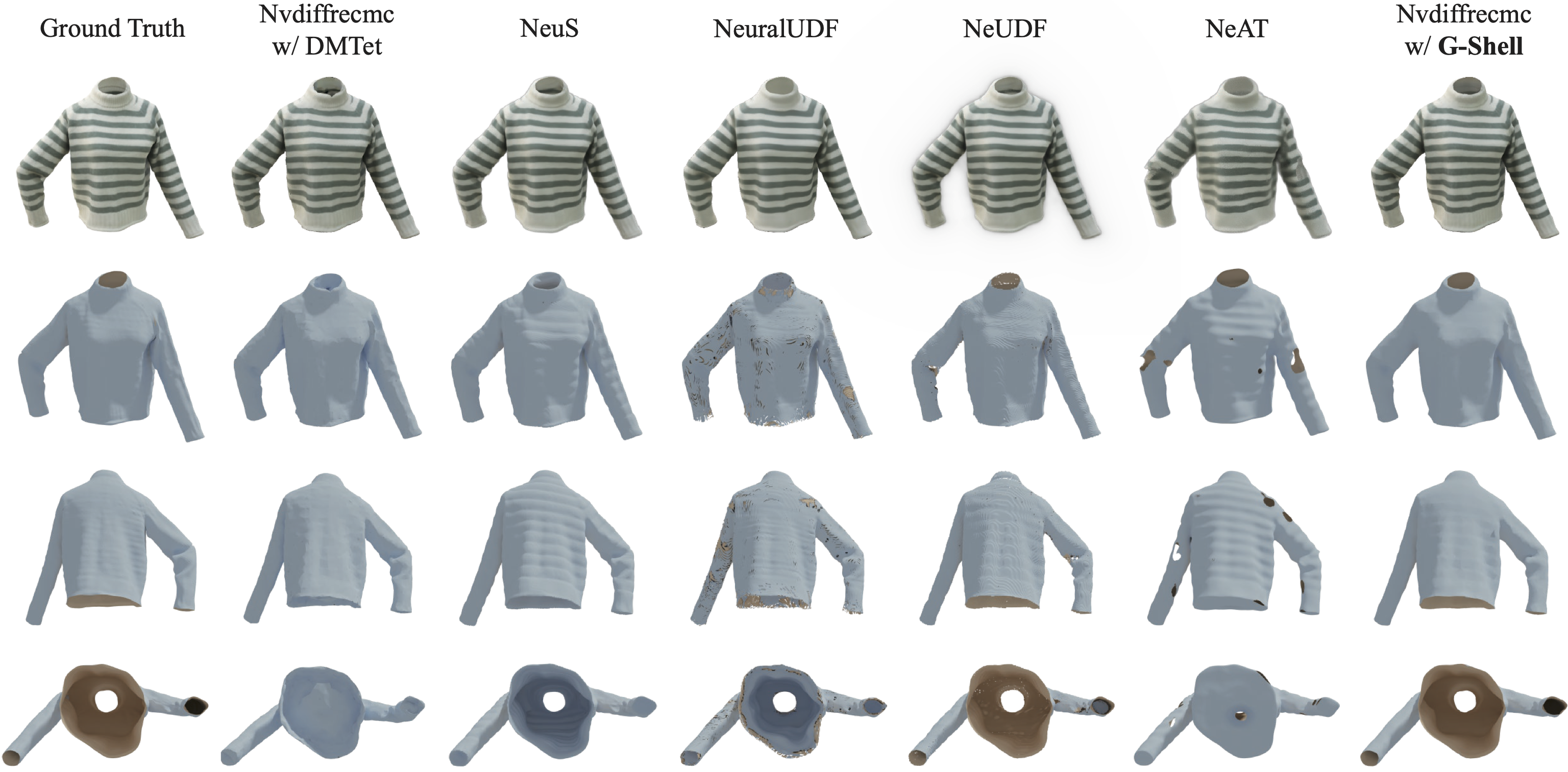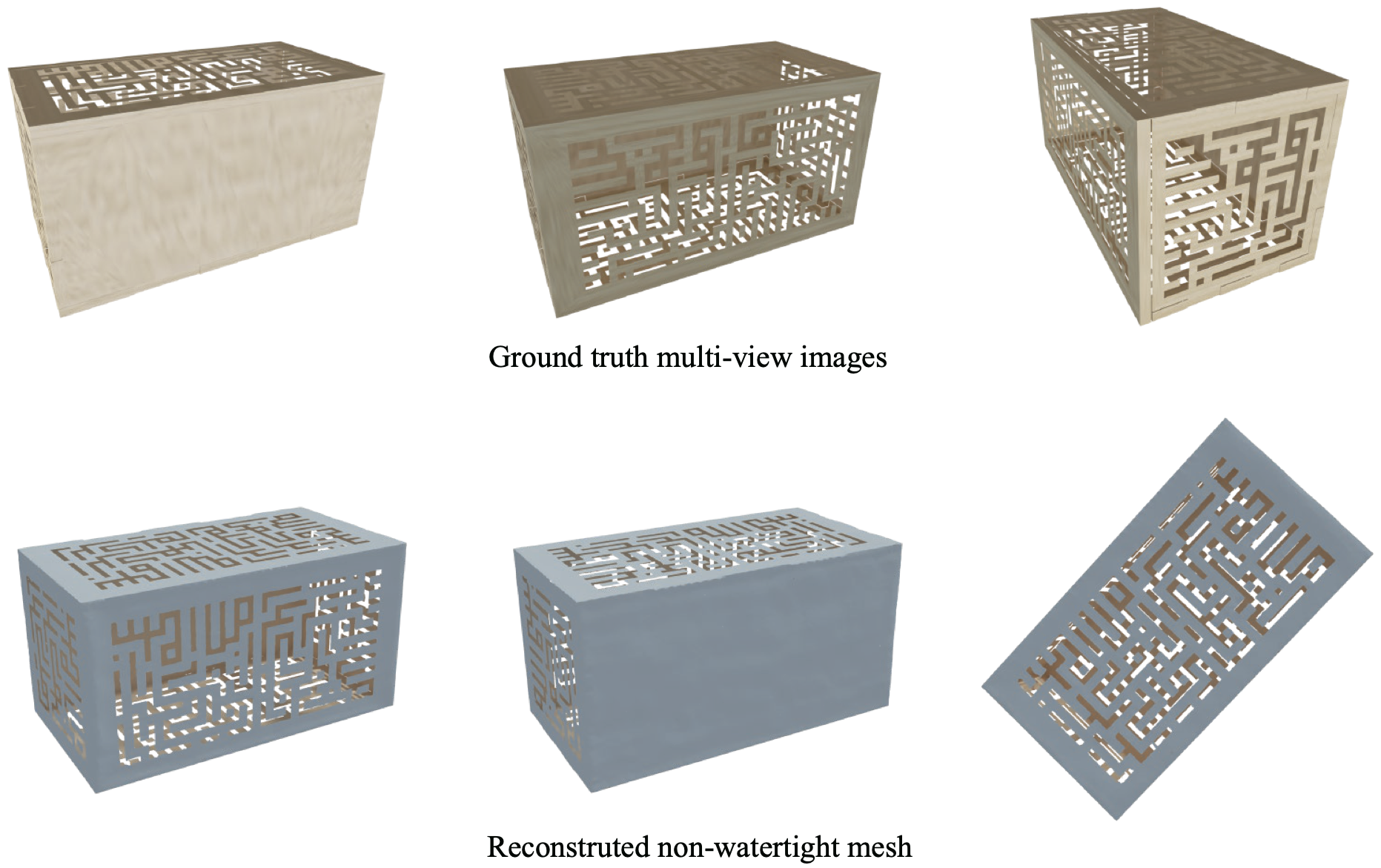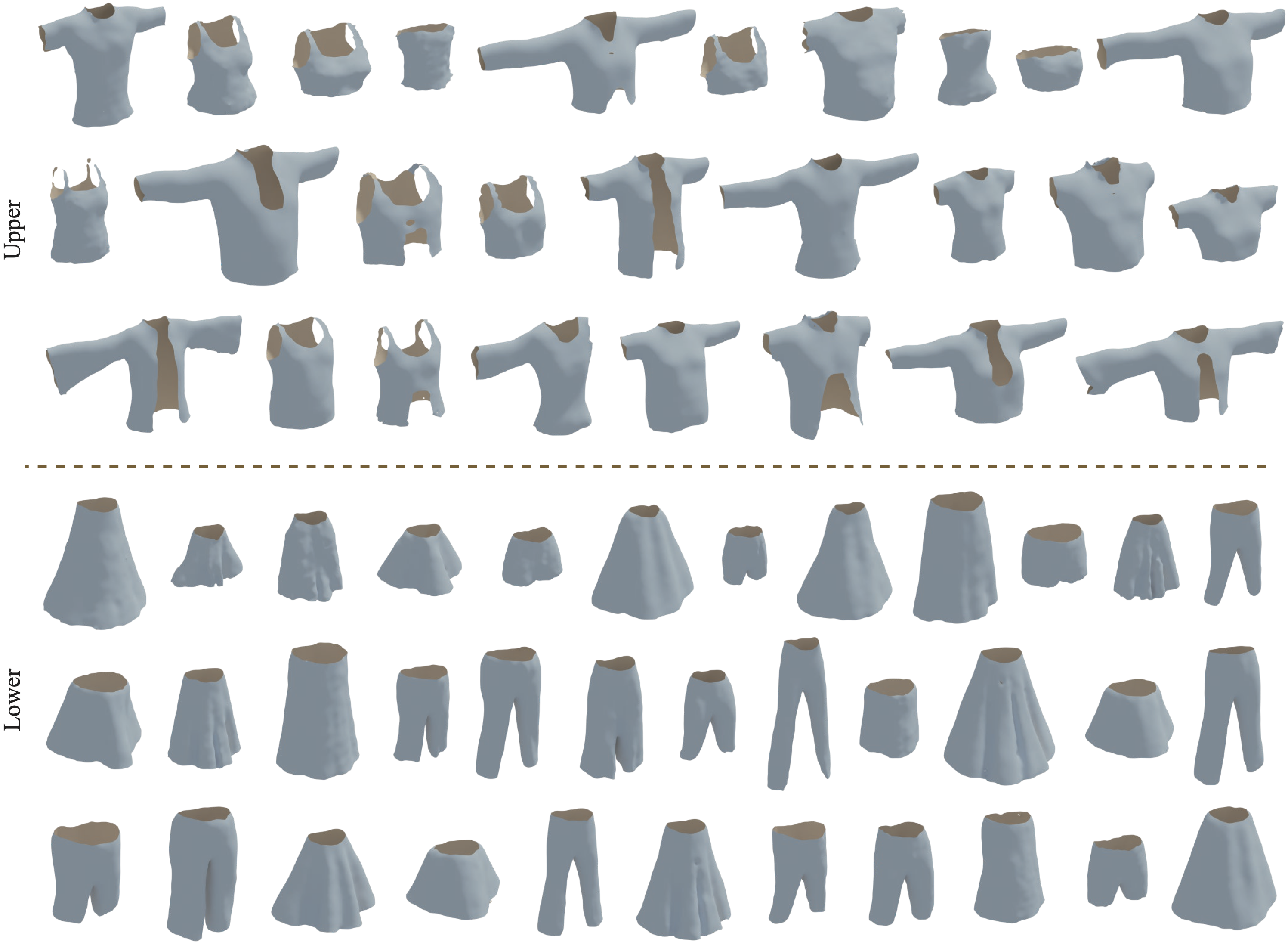G-Shell models both watertight and non-watertight meshes of different shape topology in a differentiable way. Mesh extraction with G-Shell is stable --
no need to compute MLP gradients but simply do sign checks on grid vertices.
G-Shell enables

A non-watertight mesh can be seen as some island floating on a watertight shell. We define a manifold signed distance field (mSDF) on the shell. The desired open surface is therefore bounded by mSDF zero isolines. To extract non-watertight meshes is therefore to identify zero isolines.
Rasterization-based inverse rendering with G-Shell can easily handle images rendered with realistic lighting and materials.
We show results on DeepFashion3D datasets. All topological details are almost perfectly reconstructed with G-Shell.


Some seemly difficult shapes can also be easily reconstructed with G-Shell.

Inverse rendering with G-Shell can produce watertight meshes and non-watertight meshes at the same time. If only the upper surface is visible, a single-layered mesh is reconstructed without adding any lower surface.

G-Shell can be implemented with FlexiCubes for better mesh topology on non-watertight meshes.

We show a physical simulation video of a clothing mesh reconstructed with G-Shell, along with the corresponding ground truth mesh (with the same motion sequence on the same SMPL-X human body).
The grid structure of G-Shell enables diffusion models. We propose G-MeshDiffusion, a diffusion model for non-watertight mesh generation. Training G-MeshDiffusion is easy: simply collect a dataset with G-Shell-based reconstruction and train a 3D U-Net-based diffusion model.

G-MeshDiffusion captures the underlying semantics and learns to perform reasonable interpolation between samples.


We sincerely thank Peter Kulits for paper proofreading and Zhouyingcheng Liao for creating physical simulation demos. Authors listed as equal contribution (resp., shared last author) are allowed to switch their orders in the author list in their resumes and websites. The paper title was proposed during an after-dinner coffee chat among Zhen Liu, Yao Feng, Yuliang Xiu, Weiyang Liu and Tim Xiao, especially due to Yuliang Xiu (for proposing "Shell") and Weiyang Liu (for the connection to the manga series Ghost in the Shell).
Disclosure. This work was supported by the German Federal Ministry of Education and Research (BMBF): Tübingen AI Center, FKZ: 01IS18039B, and by the Machine Learning Cluster of Excellence, EXC number 2064/1 - Project number 390727645. MJB has received research gift funds from Adobe, Intel, Nvidia, Meta/Facebook, and Amazon. MJB has financial interests in Amazon, Datagen Technologies, and Meshcapade GmbH. While MJB is a part-time employee of Meshcapade, his research was performed solely at, and funded solely by, the Max Planck Society. LP is supported by the Canada CIFAR AI Chairs Program and NSERC Discovery Grant. WL was supported by the German Research Foundation (DFG): SFB 1233, Robust Vision: Inference Principles and Neural Mechanisms, TP XX, project number: 276693517. YF is partially supported by the Max Planck ETH Center for Learning Systems. YX is funded by the European Union's Horizon $2020$ research and innovation programme under the Marie Skłodowska-Curie grant agreement No.$860768$ (CLIPE).
@inproceedings{Liu2024gshell,
title={Ghost on the Shell: An Expressive Representation of General 3D Shapes},
author={Liu, Zhen and Feng, Yao and Xiu, Yuliang and Liu, Weiyang
and Paull, Liam and Black, Michael J and Sch{\"o}lkopf, Bernhard},
booktitle={ICLR},
year={2024}
}